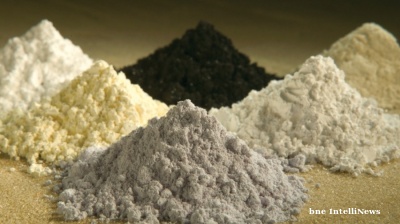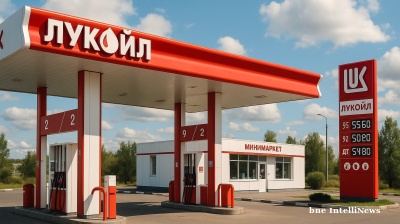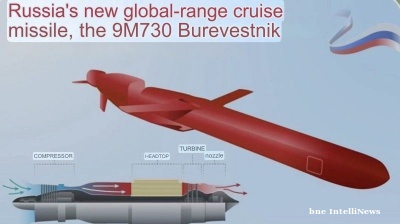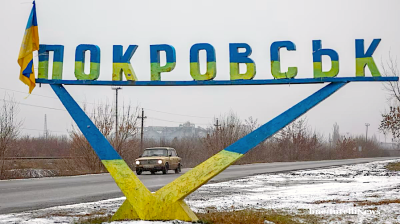In Soviet times, the steel industry was the very symbol of the country’s planned industrialization. Starting from a pre-revolutionary base in the Ukraine’s Donbas (ironically enough, given Russia’s current efforts to recapture the region by destroying it), the steel industry expanded into new centers throughout the Soviet Union, in the Urals, in Kazakhstan, in the Kuzbas—wherever coal and iron ore were found together. Steel was the sinews of revolution, and of Soviet victory in World War II. A famous Soviet novel of the 1930s, How the Steel was Tempered, captured the spirit of the time.
But the Russian steel industry, a mainstay of the economy and a leading exporter, faces difficult times ahead. Western sanctions have all but closed its access to the European and US markets and technologies, forcing it to retrench back to the domestic Russian market and limiting its ability to innovate. For the moment, the steel industry is profitable, thanks to the Ukrainian war. But going forward, once the war ends and military demand subsides, the Russian steel industry will be unable to regain its Western market, and its exports to the rest of the world will shrink as well.
This is true for two reasons. First, climate politics. Russian steel is a big emitter of greenhouse gases. Its heavy carbon footprint will expose the Russian steelmakers to coming climate-related tariffs and restrictions in Europe and North America. But an even greater threat ahead is competition from China. China’s steel industry is more than ten times larger than Russia’s, and much lower in cost. China’s economic slowdown is driving it to seek export markets throughout the emerging world. Russian steel will be hard-pressed to compete.
It is an ironic outcome. The Russia steel industry had been one of the success stories of Russia’s thirty-year opening to the West. It had successfully modernized, thanks to imported Western technology; its newly-privatized companies had been well managed by Russian entrepreneurs; and it had begun to reach out into the world economy. But the onset of Western sanctions after 2014, combined with turbulence in the global steel industry, created strong headwinds even before the Russian invasion in 2022. The future will only bring more. The steel industry stands as a prime example of the destructive impact of Putin’s war on Russia’s long-term economic competitiveness.
To see why, let us take a brief look back.
A Dance in Three Acts:
The thirty-year post-Soviet saga of Russian steel can be summed up in three acts: survival, expansion, and retrenchment, each one lasting about a decade. There will likely be a fourth act ahead, of growing isolation and stagnation.
Act One: Survival:
With the end of the Soviet Union in 1992, the steel industry declined sharply, along with the rest of Soviet heavy industry. The chaos of privatization hit the steel industry as it did other sectors, and the new private companies that emerged in the early 1990s were the scene of fierce battles for control between Soviet-era insiders and invaders from outside the sector. By the mid-1990s, the steel industry had stabilized under new private owners, but it was all but bankrupt, owing to high debts, lack of demand, backward technology, and low-quality output.
Exports saved it in the 1990s. As domestic demand collapsed, the Russian steel producers turned instead to foreign markets. Exports had accounted for only about 6% of Soviet steel output in the 1980s; but by the late 1990s the share of exports had grown to two-thirds, consisting mainly of bulk steel to Europe. Russian steel had several competitive advantages: its labor costs were low; it drew on cheap coal, iron ore, and power; and the rail network was well developed. Thanks to exports, the Russian steel industry survived and became profitable.
Unlike other sectors such as oil and gas, transportation, and manufacturing, the new private owners of the steel industry resisted the presence of foreign companies. They refused to form joint ventures inside Russia or to sell minority stakes to foreigners. That said, they were alert to the need to modernize their plants; they traveled abroad to familiarize themselves with up-to-date technologies; and they invested judiciously in the latest foreign equipment, including modern electric-arc smelting, which today produces about one-third of Russian steel. By the mid-2000s, they were able to produce a wide range of value-added products, such as pipe for pipelines and rebar for construction.
Oligarchs in All Shapes and Sizes
Who owns the Russian steel industry today? They are often called “oligarchs,” but the story of the steel industry is a useful reminder that Russian oligarchs come in all shapes and sizes. Three of Russia’s leading steelmakers, Viktor Rashnikov of MMK, Vladimir Lisin of NLMK, and Igor Ziuzin of Mechel, came up from the shop floor; another, Aleksei Mordashov of Severstal, also rose through the ranks of the steel plant in his home town of Cherepovets. Others, such as Aleksandr Abramov of Evraz, started out as traders in metals. Unlike the case of aluminum, which required imported bauxite and thus depended on foreign intermediaries who tried to seize control, the battle for ownership of the steel industry mostly involved Russian contenders who had their feet solidly planted inside their home enterprises.
Once in power, they guarded their domains jealously to prevent inroads by foreign companies, and even in the few instances when they formed joint ventures with foreign players, they did not allow foreign managers or shareholders to dominate. “On tap but not on top,” was their motto. As a consequence, when Western investors exited en masse from Russian industry after the invasion in 2022, their exodus hardly touched the steel industry.
From the shop floor to the executive suite: Portrait of Viktor Rashnikov of MMK
Viktor Rashnikov, the long-time CEO and current chairman of the board of MMK (Magnitogorsk Iron and Steel Works), Russia’s 3rd largest steel company, is one of the few examples in Russia of a genuinely self-made industrial entrepreneur. He started on the shop floor at MMK at the age of 19, working as a fitter, and over the course of a thirty-year career he rose to General Director. In parallel, Rashnikov steadily acquired shares in MMK, until by 2017 he reportedly owned 87% of the company.
When Rashnikov came in as CEO in 1997, MMK was in desperate shape, and narrowly escaped being sold to a Western group. In Soviet times, Magnitogorsk had been the largest iron and steel producer in the country. But when the Soviet Union collapsed, it had gone into a steep decline, as demand disappeared. Magnitogorsk was one of the oldest steelmakers, and it still relied on obsolete blast furnaces built between the 1930s and the early 1960s. In addition, its iron ore came from a distant source in northwestern Kazakhstan, over 200 miles away. Thus, in Russia’s new market economy, Magnitogorsk was unable to compete. By the mid-1990s, it was bankrupt.
As Rashnikov told an interviewer a decade later, “We had all the same ills as the rest of Russia: lack of money, unpaid bills, wages (for which I was personally liable on my own signature), theft by suppliers, declining export prices. And our best domestic customer, VZZ, stopped buying our steel.” But step by step, Rashnikov turned the company around. He cut back the company’s previously high costs, and he turned to foreign institutional lenders such as the European Bank for Recovery and Development (EBRD) and the German Germes Fund for low-interest credits. With this working capital, he turned to foreign suppliers, chiefly in Italy, for the most up-to-date equipment and technology. By the mid-2000s, from being one of the worst companies in the Russian steel industry, MMK had become a leader, specializing in value-added products such as flat steel for automotive sector and wire for construction.
Phase Two: The Heyday:
The Russian steel industry’s export-led “survival” strategy suffered from one major weakness: its remote location. Between 2000 and 2008, this led to a “hybrid” strategy, in which the major companies refocused their Russian production on the domestic Russian market (which had recovered sharply, thanks to strong oil-export earnings), while at the same time making ambitious acquisitions of plants abroad.[3] Some were more ambitious than others: The extreme case was Aleksey Mordashov, the owner of Severstal, who had a ten-year odyssey investing in the United States, beginning with his purchase of a bankrupt plant in Michigan in 2003. He followed that up with further acquisitions, and by 2008 he was the fourth-largest steel producer in the US.[4] But the American steel industry abruptly turned into a money-loser after the 2008-9 financial crisis, and although Mordashov insisted that “America is the future” and resisted giving up on his dream,[5] between 2010 and 2014 he sold all his US properties and retreated back to the Russian domestic market.[6] Evraz too went through an “American” period, but as with Severstal, the financial crisis of 2008-9 forced it to retreat.
In contrast, Rashnikov of MMK pursued the opposite strategy, focusing mainly on the domestic market, which took off as oil and gas prices rose, and limiting expansion abroad. For Rashnikov, the “future” was Gazprom, and specifically Gazprom’s massive gas-pipeline construction program. Rashnikov also invested heavily in sheet steel for the automotive industry. But even Rashnikov was not immune to foreign ambitions during this period. However, his main investment was in Turkey, where he invested $260 in borrowed money to finance MMK’s share in a joint venture.
Phase Three: Growing Headwinds:
From 2009 up to the eve of the Russian invasion, the Russian steel industry faced growing headwinds both inside Russia and abroad. The great oil-fueled boom of 2000-2008 was over, and the Russian economy stopped growing, steel demand along with it. Foreign demand for steel was declining in both the US and Europe as well, and by 2014 the Russian steelmakers had retreated from their foreign ventures. Severstal and Evraz dumped their international assets, while they reported losses at home. During this period, Russian steel exports fluctuated, depending on demand in a handful of emerging economies, notably Turkey, Mexico, and the Former Soviet Union.
A Fourth Phase Ahead: Withdrawal and Retrenchment
Since 2022, the Russian steel industry has entered a fourth phase, in which Russian steel producers have once again turned away from exports and refocused on the domestic market. This is due to two causes. Sanctions against Russian steel by the EU have cut off most of Russia’s access to the European steel market.[7] Russian steel is unlikely ever to return to Europe, after the Ukrainian war ends. The main reason is the EU’s tightening climate policy. Following the recent adoption of the EU’s so-called “CBAM” policy (which stands for “Carbon Border Adjustment Mechanism”), Russian steel will soon be required to pay a “climate tariff” on carbon-intensive imports into Europe.[8] The United States will soon follow suit with a “CBAM” equivalent of its own. Russian steel will be a prime target.
Steel, because of the high emissions produced during smelting with coal (which still accounts for about two-thirds of Russian steel production), is classified as “hard to decarbonize,” along with a handful of other industries such as cement and fertilizers. There is, however, a potential way out. The most promising technology for reducing its carbon footprint is hydrogen. Russia has no “green” hydrogen, produced with carbon-free renewables, but it has considerable potential to produce “blue hydrogen,” that is, hydrogen made with natural gas, which it has in abundance, especially since the near-collapse of its gas exports to Europe. If the EU is willing to accept imported steel smelted with blue hydrogen as “sustainable” under CBAM rules—a big if— Russian steel might someday regain access to Europe’s steel market. But so far Russia’s effort to develop hydrogen is still at an early stage, and green Russian steel remains a distant prospect.
But the more important cause of Russian steel’s future isolation will be growing competition from China. In the wake of China’s economic slowdown, Beijing has removed its previous cap on steel production and is encouraging Chinese steelmakers to produce flat-out for export. As a result, the global market is being flooded with cheap Chinese steel, making Russian steel exports uncompetitive.
For the moment, steel demand remains strong inside Russia, due to the war and expanded military production. Russian steelmakers have responded by shifting back to the internal market. But in the long run this will represent a growing loss, both to Russia’s budget and to its steel industry. In 2021, the last “normal” year before the Russian invasion, steel exports brought in $29 billion. This fell to $24 billion in 2022, with further declines likely to come, so long as the Western sanctions and the Chinese export offensive continue. This will lessen the ability of the Russian steel industry to finance further modernization—or to grow greener. Over time, Russian steel will look more and more like a parochial sector, producing steel and pollution for an increasingly backward economy.
In sum, the saga of the steel industry stands as an iconic case of Russia’s flawed thirty-year opening to the world after the end of the Soviet Union, and its subsequent reclosing in the wake of Putin’s war and Western sanctions. The advent of “decarbonization” in Europe and the rise of competition from Chinese steel exports will compound its problems. Will there be a second tempering of Russian steel? For the coming decade that looks doubtful.
Thane Gustafson is a political scientist, professor at Georgetown University, Washington DC. Teaches and writes on Russian and European affairs, focusing on the politics of energy and climate. You can sign up to his substack “The Devil’s Dance” here.
Opinion
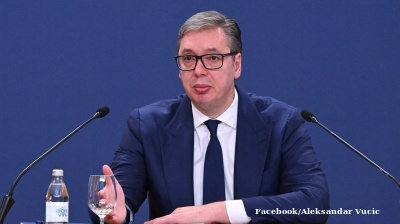
A year after the Novi Sad disaster, Belgrade faces one crisis after another
Serbia’s government is grappling with a convergence of crises which threaten to erode President Aleksandar Vucic’s once-dominant position.
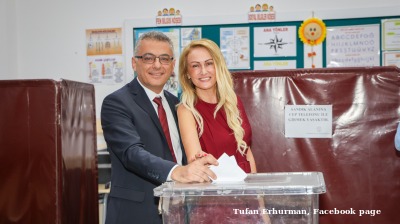
Don’t be fooled, Northern Cyprus’ new president is no opponent of Erdogan, says academic
Turkey’s powers-that-be said to have anticipated that Tufan Erhurman will pose no major threat.
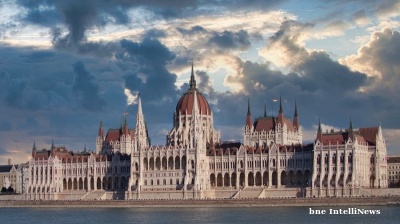
COMMENT: Hungary’s investment slump shows signs of bottoming, but EU tensions still cast a long shadow
Hungary’s economy has fallen behind its Central European peers in recent years, and the root of this underperformance lies in a sharp and protracted collapse in investment. But a possible change of government next year could change things.
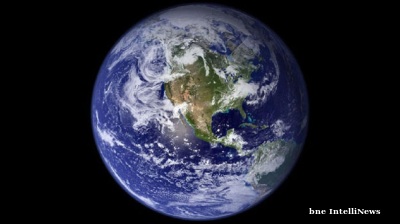
IMF: Global economic outlook shows modest change amid policy shifts and complex forces
Dialing down uncertainty, reducing vulnerabilities, and investing in innovation can help deliver durable economic gains.
